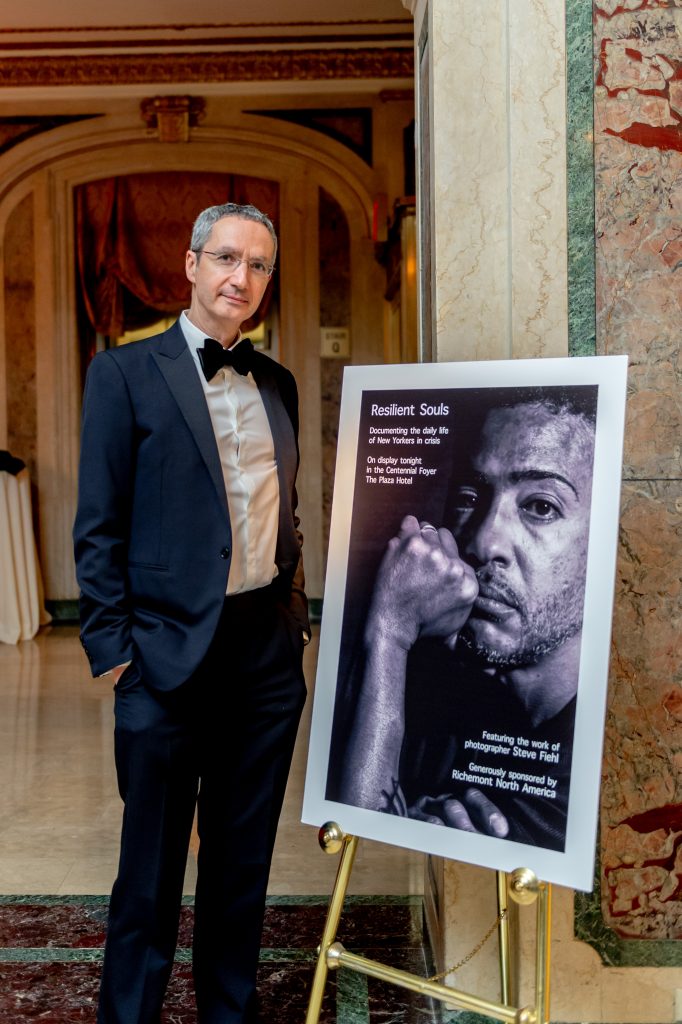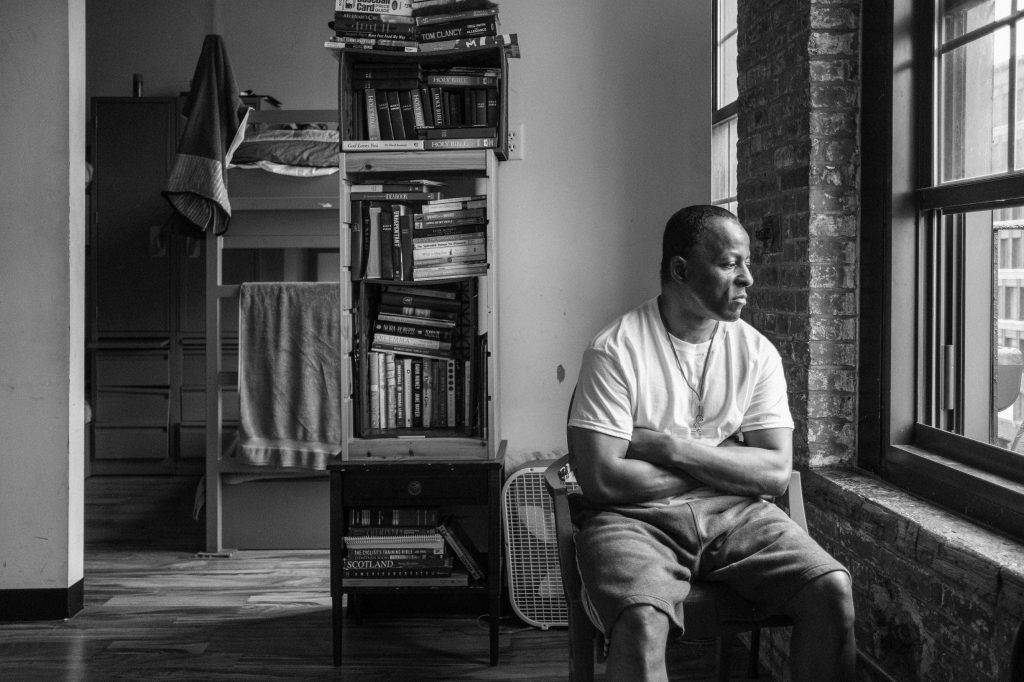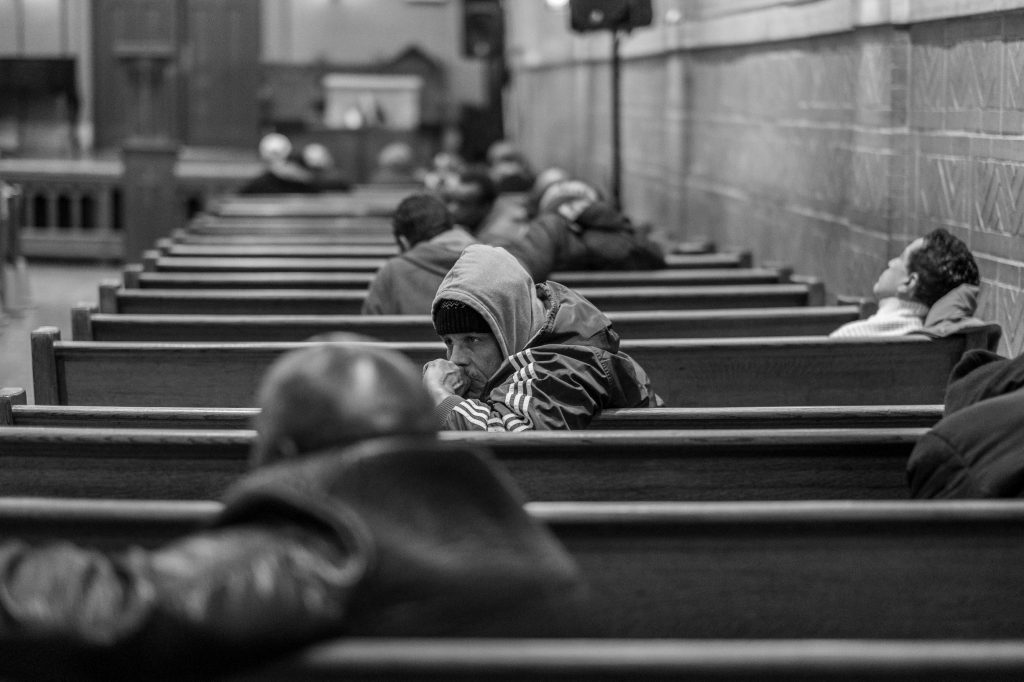FRENCH PHOTOGRAPHER STEVE FIEHL PAYS TRIBUTE TO THE TENACITY OF THE HOMELESS


Steve Fiehl is a photographer who recently spent many months in Bowery shelters and programs for the homeless. Born in France, he has lived in New York for the past five years, first as a successful businessman, then as a photographer specializing in social issues and people portraits. His recent exhibition, Resilient Souls, was sponsored by Richemont North America.
Q: You were a successful businessman in France; how is it that you moved to NYC and became a photographer?
A: After 18 years, the company I founded (an e-learning business with 10 million clients) was a leader in Europe; we wanted to expand to the U.S. A major American publisher took control and is now investing in this business.
I moved to NYC to work for them, but after a while, I grew tired of the corporate life; I wanted to pursue my passions and contribute more to our society. So I quit and became a photographer, one of my oldest passions, by taking classes at the International Center of Photography (ICP). Social photography is what I want to do, as it raises awareness of many issues by touching people’s hearts.
Q: What piqued your interest in the homeless?
A: We all see homeless people on the street, but we never know who they are, what their story is, what’s going on behind the doors of shelters or how they survive. I guess I wanted to know more. I was interested to document their lives but also, for some of them, their reconstruction. I’ve always been interested in personal growth (my former e-learning business was exactly into that field) and these were the most extreme examples I was aware of.
Q: Do you believe viewing your photographs will actually inspire people to take action? How would you describe the role of photography in the world today?
A: Photography remains extremely powerful. Think about the picture of the starving girl in Yemen, which convinced the U.S. to involve themselves in the conflict, or the migrant child dead on a beach, whose photograph was at the origin of the huge turnaround of Germany in welcoming migrants on their soil. One single image can be a very powerful story.
In my project Resilient Souls, showing homeless people sleeping on the floor of a shelter, so close to each other as if they were in a prisoner’s camp, has been a shock not just for the viewers but also for The Bowery Mission, which realized they may have to change the way they welcome their clients—even if what they do is already amazing.

Q: Can you talk a bit about a few of the people you photographed who most touched your heart?
A: I’ve met so many men and women with amazing stories. I don’t know how they survived. They deserve our admiration rather than our compassion.
I met a man who never knew his father, who had been abused by his mother. He left home for a gang at the age of 13, began dealing drugs at the age of 15, became addicted to all sorts of drugs and has been in jail several times. He did the Bowery program once, which lasts a year and a half, he got married, he had a stable job. Then he had an accident and was treated with opioids—this woke up the addiction. So, he did the program all over again.
I met another man who was initiated to drugs by his own father, who put the first needle in his arm. They were sleeping together in abandoned houses while his mother was waiting for them at their home. But he was missing his father so much in his childhood that he chose to follow his path.
I encountered a young girl who left D.C. to look for a job here in NYC, but she never found one. She joined a gym to be able to take showers and she spends her time in Starbucks applying for jobs. She told me she sleeps only a few hours per day. She looks like you and me; nobody would guess she doesn’t have a home.
So many different stories and each one is unique.
Q: Other than financial contributions to The Bowery Mission, what can we do to help?
A: People can volunteer at The Bowery Mission, serve meals, give clothes, etc. People can also just change the way they treat homeless people: just by saying hello, asking what the person needs, taking the time to bring back a coffee or a blanket. Creating relationships with our neighbors sleeping on the street creates such a difference.
Q: How successful are the Mission’s life transformation and re-integration programs?
A: This is a question only they can really answer. Not all of the people make it. They have to change their attitudes towards life, rebuild trust in themselves and in others, envision a career, find a stable job that pays enough to afford the cost of living in New York City, then find a transitional home, then a home. It is a real journey. Each time some of the clients make it. If you saved a man, you saved mankind.

Q: Where else can we view this powerful photo exhibition?
A: We are in discussion with museums, but also with large retail spaces for public exhibitions targeting a wide audience. The goal is to change the way we look at homeless people. All ideas are welcome!
Q: How has this project changed your life?
A: It has been a spiritual journey, where you navigate through very different feelings: fear and sometimes repulsion; pity and compassion; admiration and love. These New Yorkers are not just without a home; they are disconnected from their family and any kind of social relationship; they have no more trust in others or themselves; they have lost their sense of identity. But they are still here—struggling. These survivors of our contemporary world can teach us much more than we think about life, resilience and the importance of spirituality. They are wiser than many of us. I dedicate this work to those who have the courage to stand up and fight for their dignity as human beings.
Q: What’s next for Steve Fiehl?
A: I’m still continuing this project, but I have another one in mind that’s about life and death. I cannot say more, but believe me, it will take us to the extremes—this is probably what interests me the most!



